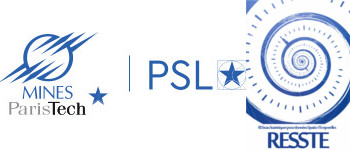In the task of predicting spatio-temporal fields in environmental science, introducing models inspired by the physics of the underlying phenomena and that are numerically efficient at the same time is of growing interest in spatial statistics. On the one hand, the abundance of space-time datasets calls for new numerical methods to efficiently process these large datasets. On the other hand, the richness of the datasets opens the possibility to relax the space-time stationarity. The SPDE (Stochastic Partial Differential Equation) approach has proven to be effective for the estimation and the prediction (kriging) in a spatial context. By varying the coefficients of a differential operator in space and over time, it allows defining new non-stationary space-time models and prediction methods. Here, we present the advection-reaction-(hyper)diffusion SPDE with first order derivative in time. In this large class of spatio-temporal models, the spatial trace is characterized by the Matérn covariance function. The simulation of this class of models is based on the numerical solution of the SPDE, obtained by discretizing the temporal derivative with a finite difference method (implicit Euler) and, at each time step, by solving the purely spatial SPDE with a Finite Element Method (Continuous Galerkin). Computationally efficient methods are required to infer the parameters of this SPDE and to predict the spatio-temporal field by kriging.
|
|
|
|
Spatio-temporal prediction by SPDE: state of the art and challenges
1 : Centre de Géosciences
-
Site web MINES ParisTech - École nationale supérieure des mines de Paris, Université Paris sciences et lettres
35 rue Saint-Honoré 77305 Fontainebleau cedex -
France
|
| Personnes connectées : 8 | Vie privée |

|

 PDF version
PDF version